MATTERS OF OBSESSION
Conversations through time: Spotlight on the work of Lesotho artist Samuele Makoanyane
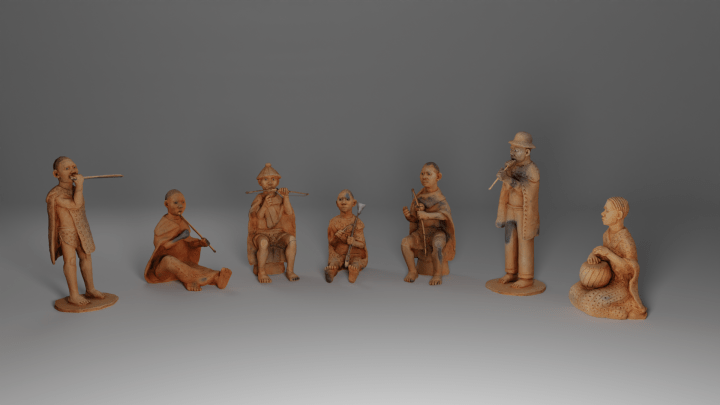
The work of Lesotho artist Samuele Makoanyane (1909-1944) has been reclaimed in an innovative new project led by Ledelle Moe, a senior lecturer at Stellenbosch University’s Visual Arts Department: ‘Samuele Makoanyane – A Woman Playing the Moropa Drum – Conversations with the Traditions of Fine Arts Practices in Southern Africa’.
“Steven Sack got in touch with me at the beginning of last year. He was working on the Iziko Ke Liha Pene, I lay down my pen exhibition with Stephen Wessels at the time and he reached out to me about integrating photogrammetry into our programming. That led to a conversation with Ulrich Wolff at the Stellenbosch University Museum, where we discussed borrowing one of the Makoanyane pieces from the Kirby collection and exhibiting it,” Moe said.
Sack first came across Makoanyane in 1988, when he curated the exhibition, The Neglected Tradition: Towards a New History of South African Art (1930-1988), at the Johannesburg Art Gallery, and has been fascinated by the artist’s work ever since.

From Group Life by Samuele Makoanyane, from the virtual exhibition Ke Liha Pene. (Photographic renditions by Stephen Wessels and images supplied by Iziko Museums of South Africa)
“There is no question that it’s a movement,” Sack noted. “Anitra Nettleton and Wendy Gers have written about (Makoanyane) and collaborative ventures have been undertaken with multiple cultural institutions, (including the) Lesotho National Museum, Morija Museum and Archive, Iziko Museums of South Africa, UCT Kirby Collection, Stellenbosch University Museum and Fine Art Department, East London Museum, Museum Africa… ”
In the 1930s, Professor Percival Kirby commissioned Makoanyane to create seven figurines of Lesotho musicians that are today part of the Kirby Collection at the College of Music in Cape Town. The original sculpture of the female figure playing the Moropa drum is at the heart of the multifaceted exhibition due to open next month.
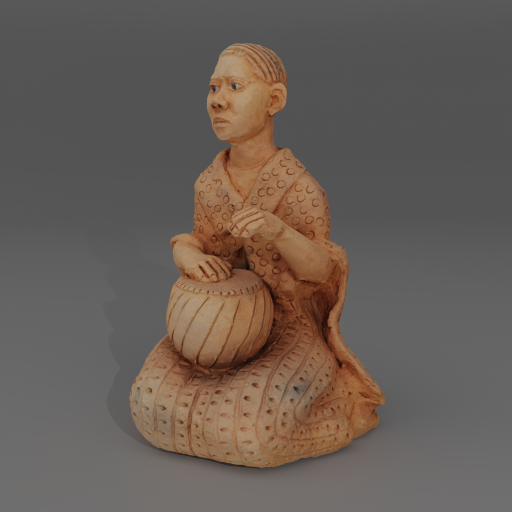
‘Woman playing the drum’, a figurine that ia part of the Kirby Collection at the University of Cape Town. Image: supplied
Other elements of the exhibition include a number of screens displaying the students’ responses to the sculpture; interactive 3D replicas produced by Stephen Wessels using photogrammetry; the virtual Ke Liha Pene, I lay down my pen exhibition and more images of students working with clay and firing clay using traditional processes.
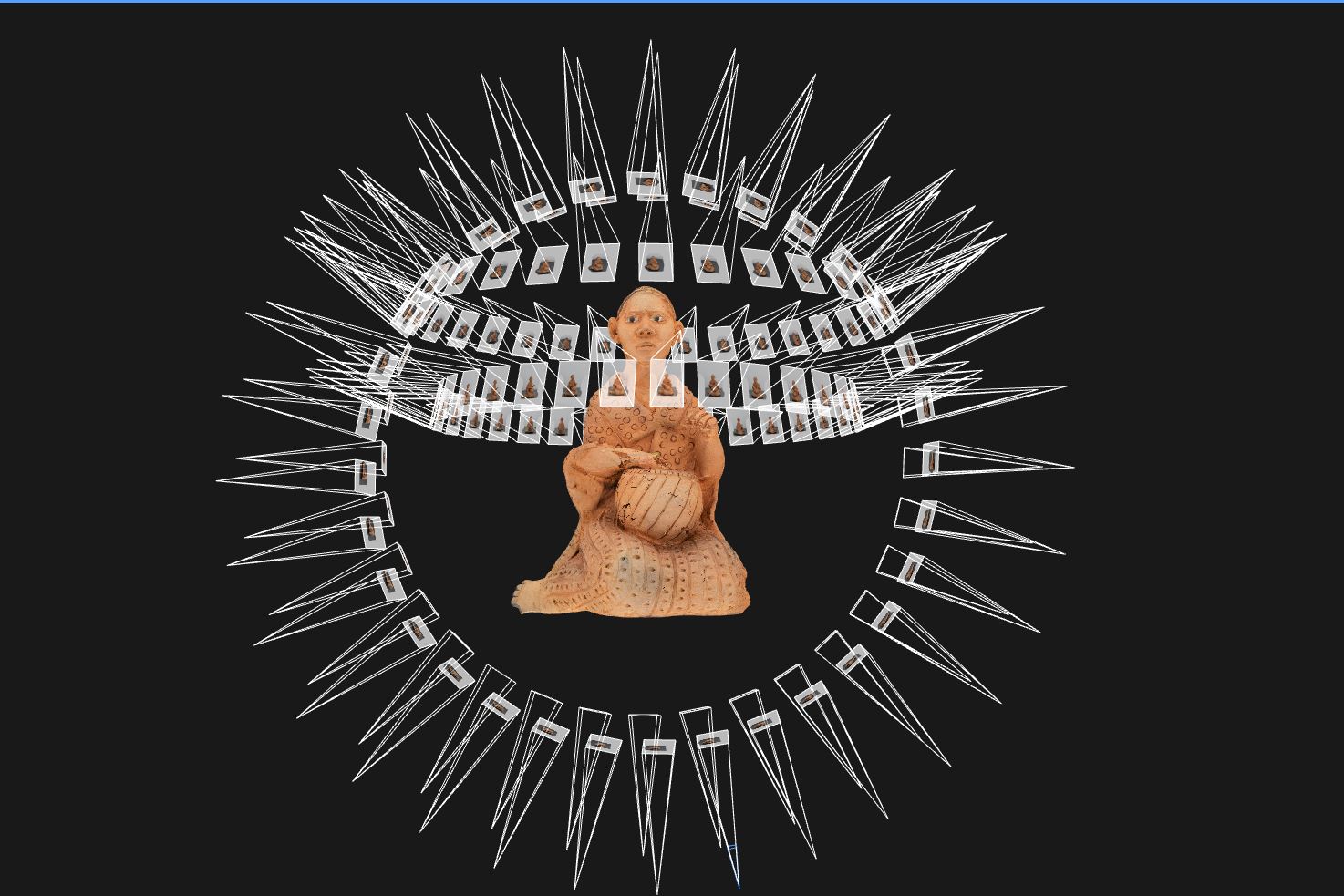
Photogrammetry rendition of the woman playing the Moropa Drum by Stephen Wessels. Image: Supplied
The exhibition is an “important convergence of the world we live in at the moment, which is both analog and digital. There’s elasticity now to inclusion and it’s infinite. It could go on and on and on,” Moe said, adding: “I think the key thing about photogrammetry is that it collapses geography, so you don’t have to go to the Metropolitan Museum of Art in New York City to see some of the works on display.
“You can see fossils and sculptures and ancient artifacts through these photogrammetry devices, which is a much more democratised accessibility to museum spaces than it’s ever been before. It echoes the way that we are required and need to teach these days, which is half online and half in person.”
Esther Esmyol, curator of Iziko’s Social History Collections, says: “Iziko Museums is delighted that the Samuel Makoanyane virtual exhibition has expanded beyond a website or phone page to be inspirational to young sculptural students and that the influence of Makoanyane’s exceptional work is alive some 80 years since his passing.”
Students were introduced to the life and work of the artist and then sculpted their responses to the figure of the woman playing the Moropa drum.
“They were invited to sculpt the whole figure or a part of it, and they have chosen to sculpt a part of the figure. So someone sculpted the elbow, another student did a wrist, which is quite a beautiful form. Some did the point of contact of the hand on the drum and the gesture of the hands, and then quite a few did portraits of her shoulders, neck and head. So there are a variety of studies of this particular piece,” said Moe.
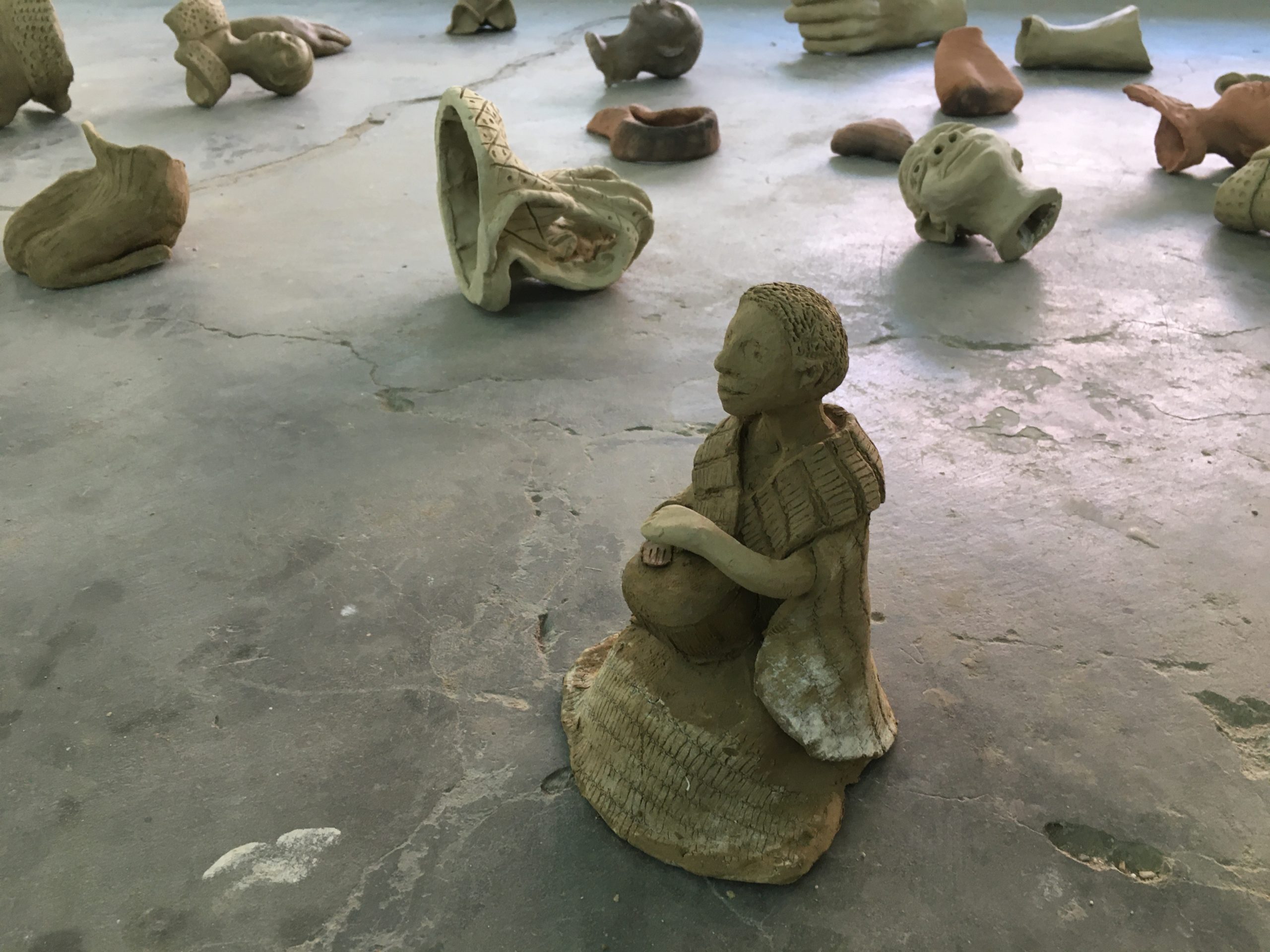
Students were invited to sculpt the whole figure or a part of it, and they chose to each sculpt a part of the figure.Image: Supplied
The kneeling woman playing the drum is intensely focused on what she is doing.
“I have looked at the piece itself and made my own studies of it. It is really remarkable how he captured this particular person in that moment. You can almost see her holding her breath as she looks to one side and plays the drum. So these aren’t generalised figures; they are so accurately observed,” added Moe.
While they were working, the students listened to the sound of the Moropa drum. This, Moe explained, “ignites the activity of many, many years ago and brings it back to life through making, re-seeing, understanding and translating all the different facets: who that woman was; who Makoanyane was, what the clay was like at the time, what the sound was like at the time. It is about a conversation between times, between resonances of things.”
The students sourced natural clay from their local environments, as Makoanyane would have done, and their work was fired using the traditional pit fire method.
“There’s a lot of waiting,” Moe said. “I realised when designing the course that we are on certain academic timelines, we are not in rural Lesotho, so I think the urban/rural combination of things is really wonderful.”
The exhibition location adjoins a larger space where the exhibition, From the Vault, is currently taking place. From the Vault assembles a collection of 20th-century South African collections from the Stellenbosch University Museum and the Fort Hare Museum. Moe says that by contextualising Makoanyane’s work in this way, his figurines are brought into conversation with other works, which has not been the case before within the larger context of southern African cultural practices.
According to Sack, Makoanyane’s works are “hidden treasures: and this lack of dialogue is an oversight”.
Indeed, Moe explains: “To see Makoanyane’s work through the photogrammetry and in the context of the Fort Hare and Stellenbosch collections is actually quite wonderful because there are all these different conversations about figurative traditions, depictions of the body, of anatomical correctness, and departures from the relative to the material that the work is made out of.
“Some of the wood carvings and other ceramic pieces in the show really start to resonate with the language that Makoanyane used at the time, which is very detailed and very much about telling a story of a place and time.”
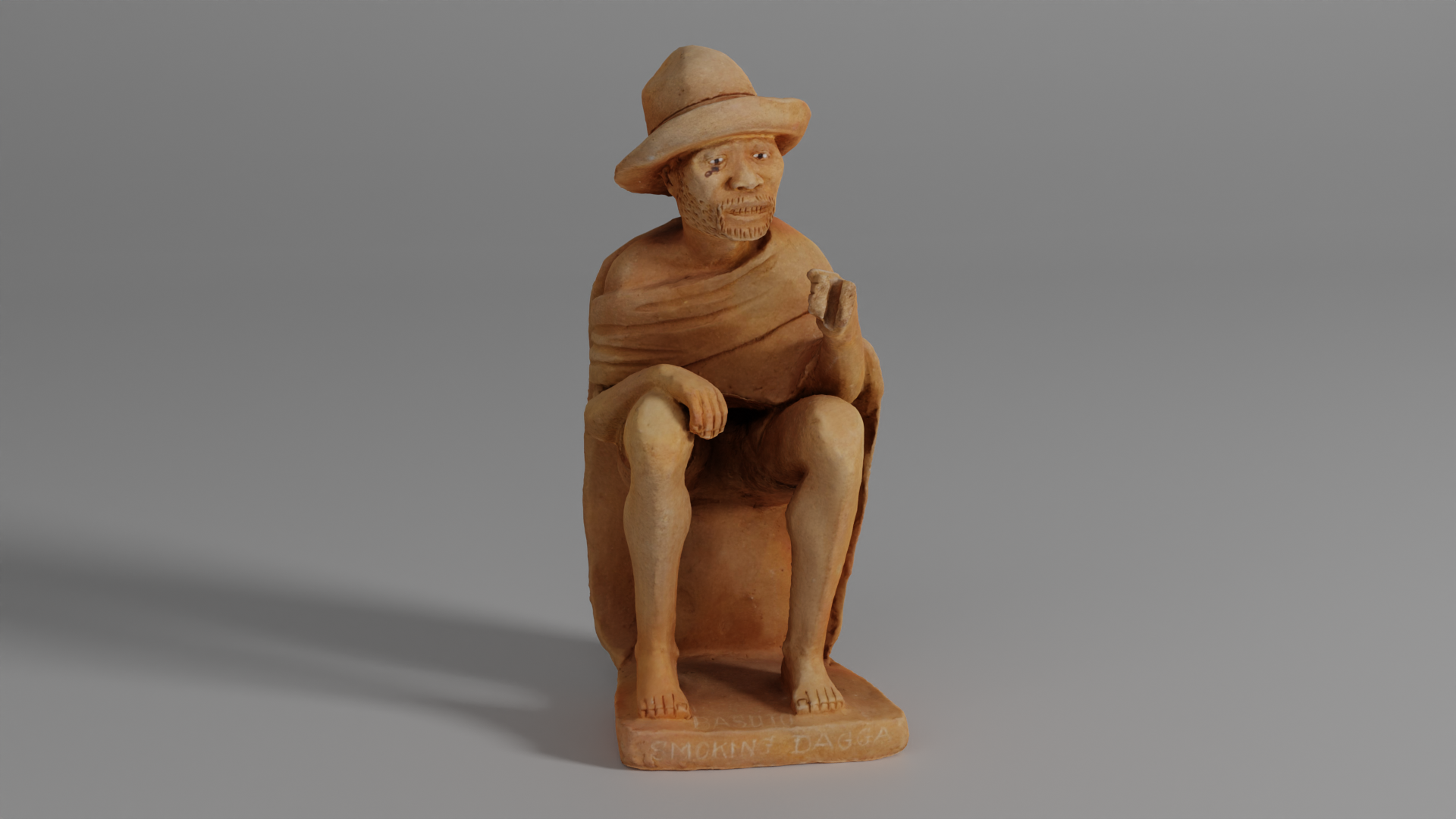
From Group Life by Samuele Makoanyane, from the virtual exhibition Ke Liha Pene. (Photographic renditions by Stephen Wessels and images supplied by Iziko Museums of South Africa)
The exhibition, Samuele Makoanyane – A Woman Playing the Moropa Drum – Conversations with the Traditions of Fine Arts Practices in Southern Africa, will be launched with an online panel discussion between members of the curatorial team about the historical and pedagogical framework of the exhibition, on 13 October at 6pm.
“I think the students are really excited about being here in 2021, with the dance between online and offline, touching the clay on-site, recording it and sending it through in digital format,” said Moe. DM/ML
For more information click here.


















 Become an Insider
Become an Insider
Comments - Please login in order to comment.